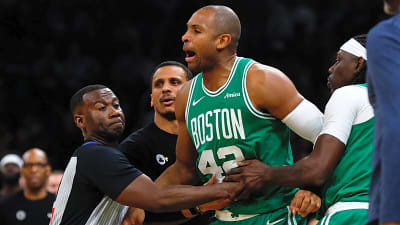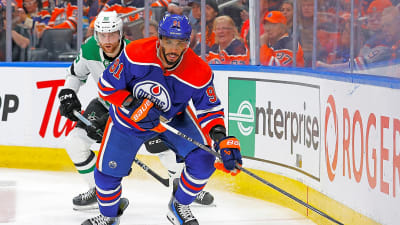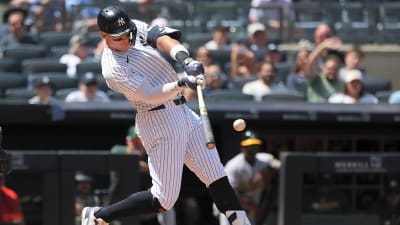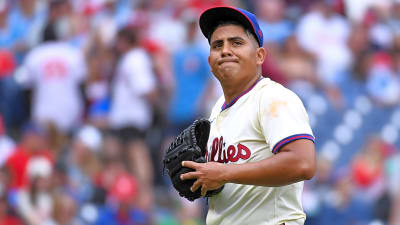
After a rollercoaster 2024–25 NBA season, the Los Angeles Clippers doubled down on their veteran core, re-signing James Harden to a two-year, $81.5 million contract . The move, while unsurprising in terms of loyalty and continuity, invites scrutiny when viewed through the lens of performance, postseason success, and long-term roster construction. With 12 players currently under contract, including Drew Eubanks and Jordan Miller on non-guaranteed deals, the Clippers sit approximately $22 million below the lower luxury tax apron. That financial flexibility should allow them to bring back Nicolas Batum, who declined his $4.9 million player option, and still make use of their $14.1 million non-taxpayer midlevel exception this offseason.
The second year has a player option and is partially guaranteed. This deal furthers the strong partnership Harden has forged with the Clippers since he arrived. He receives a well-deserved raise while providing the team with flexibility to add talent in the present and future. https://t.co/lC963aWu2B
— Shams Charania (@ShamsCharania) June 29, 2025
Harden, an 11-time All-Star and turning 36 in August, put together one of his most balanced seasons to date. He averaged 22.8 points, 8.7 assists, and 5.8 rebounds per game, earning both All-Star honors and a spot on the All-NBA Third Team. With Kawhi Leonard sidelined for much of the season due to injury and Paul George heading to Philadelphia in free agency, Harden stepped up as the Clippers’ offensive engine.
Behind Harden’s leadership, the Clippers finished with a 50–32 record, good for the fifth seed in the Western Conference. But their playoff dreams were short-lived. The team bowed out in the first round after a hard-fought series loss to the defending champions, the Denver Nuggets.
As the Clippers look ahead, Harden’s return represents both a bet on continuity and a test of endurance for a team still chasing a legacy that remains just out of reach.
The Clippers’ season in review: Another year of what-ifs
The 2024-25 season marked yet another chapter in the Clippers’ ongoing saga of potential unfulfilled. Despite having All-Star caliber players like Kawhi Leonard and James Harden, health and consistency again plagued the squad. Leonard missed significant stretches due to injury, and though the team showed flashes of brilliance, they ultimately bowed out in the first round of the playoffs to a younger and faster Nuggets team.
“The best-case scenario is that James [Harden] is here a long time and the Clippers win championships,” President of Basketball Operations Lawrence Frank said during the LA Clippers NBA Draft media availability. “That’s the best-case scenario.
The Clippers finished the regular season as a fifth seed in the West, posting a respectable 50–32 record. Yet their offense, often slow and isolation-heavy, struggled to keep up with more athletic teams. In this structure, James Harden served as both a stabilizer and a paradox, he made the machine run, but also slowed it down at times.
Harden’s 2024-25 performance and contract grade: Efficiency over explosion
James Harden reinvented himself once again last season. No longer the explosive MVP candidate from his Houston days, Harden instead settled into the role of floor general and playmaker, averaging 22.8 points, 8.7 assists, and 5.8 rebounds per game. He shot 35.2% from three, maintained a strong assist-to-turnover ratio, and played 35 minutes per game, a testament to both age management and Ty Lue’s rotational depth.
JAMES HARDEN STEP-BACK DAGGER IN CHICAGO
pic.twitter.com/aZW5BDnbrr
— SportsCenter (@SportsCenter) February 27, 2025
He added to his resume of All-Star and All‑NBA honors, while hitting several personal milestones. Nevertheless, his inability to sustain that form in the crucible of Game 7 spotlighted a recurring postseason narrative.
The Clippers secured the No. 5 seed in the Western Conference. However, in a dramatic first-round series against the defending champion Denver Nuggets, Harden was instrumental in forcing a Game 7, delivering 28 points, 8 assists, and 6 rebounds in Game 6. Over the seven games, he averaged 18.7 points, 9.1 assists, and 5.4 rebounds per game, with shooting splits of 43.6% FG, 36.4% 3P, and 81.8% FT.
Yet Game 7 cast a shadow. Harden scored just 7 points on 2-for-8 shooting, despite dishing 13 assists and grabbing 5 rebounds, and the Clippers fell 120–101. Critics seized on the performance as emblematic of Harden’s postseason inconsistencies, something noted in historical analyses
Is $81.5 Million Worth It?
From a pure numbers standpoint, the Clippers are paying Harden approximately $39 million annually, a hefty price for a 35-year-old guard whose prime athleticism is behind him. Yet the contract’s structure is reportedly front-loaded and short-term, giving L.A. flexibility beyond 2027.
Not only will Harden instead make a minimum of $39 million this season (assuming maximum 8% raises), but he also gets the benefit of an unorthodox player option for 2026-27. Per ESPN’s Shams Charania, the player option is partially guaranteed, making the second season something of a mutual option.
The Clippers’ decision to bring back Harden is rooted in pragmatism. He’s still a top-25 player in terms of offensive impact and arguably the best passer on the team. The short-term nature of the deal limits long-term damage, and in a win-now window, continuity is valuable. However, the contract also caps the team’s flexibility and places immense pressure on an aging core to finally deliver.
Unless the Clippers make meaningful strides in athleticism and pace through the supporting cast or find a way to keep all their stars healthy, Harden’s deal may soon look like a nostalgic overspend.
Grade B
More must-reads:
- Jazz's latest moves suggest they're still going to tank
- Former executive's comment about LeBron James' trade market may raise eyebrows
- The 'NBA all-time scoring leaders' quiz
Breaking News
Trending News
Customize Your Newsletter
 +
+
Get the latest news and rumors, customized to your favorite sports and teams. Emailed daily. Always free!








